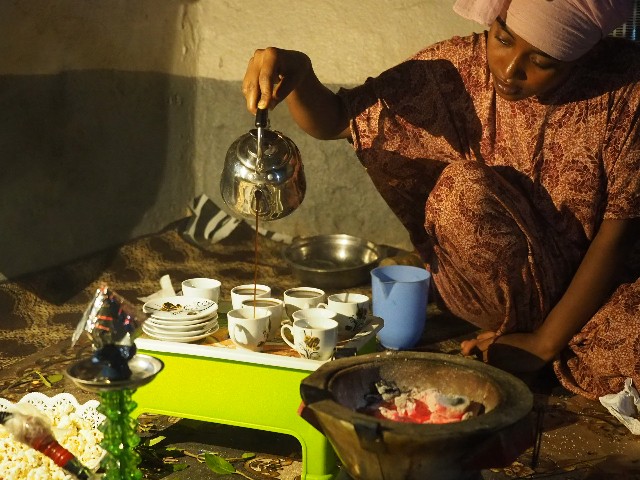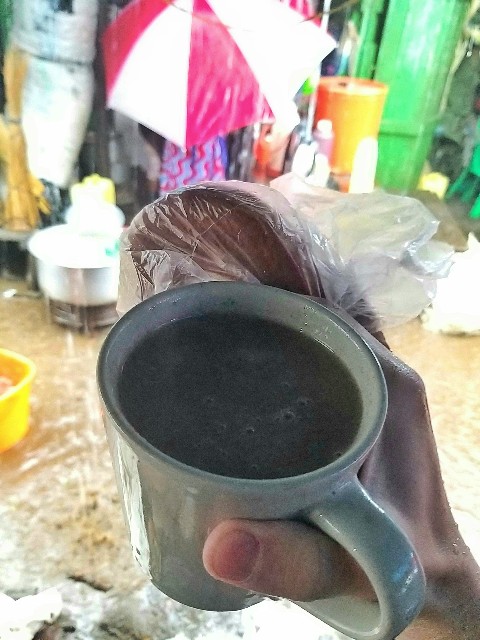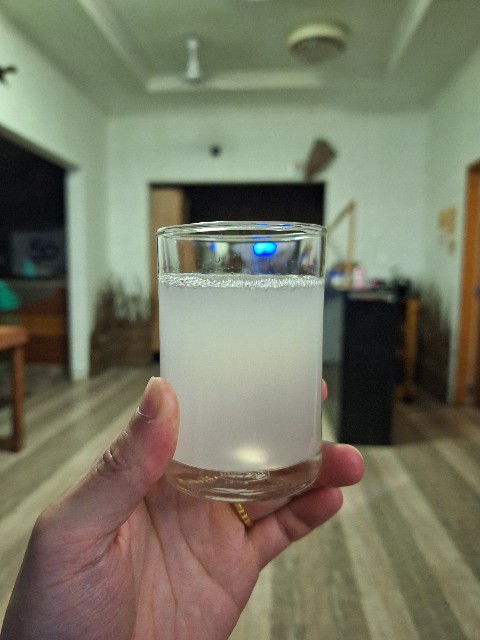“Product of Ethiopia” — This label appears frequently in cafes and coffee shops worldwide as a mark of premium beans. Known as the hallmark of specialty coffee, its aromatic flavors have long delighted coffee connoisseurs.
Wouldn’t Ethiopian coffee taste even more exceptional when enjoyed in its homeland? With this simple curiosity, I embarked on a journey to Ethiopia. In this blog, I’ll share my experience of sampling coffee across various locations, from the capital Addis Ababa to provincial towns. To put it simply, the taste was surprisingly unexpected…
Ethiopia’s Deep Connection with Coffee

Like turning the pages of an ancient history book, Ethiopia’s coffee story stretches back through time. A goatherd named Kaldi noticed one day that his goats became exceptionally energetic after eating some unfamiliar red berries. Led by curiosity, the boy tried these berries (coffee cherries) himself and felt a strange surge of vitality…
This tale is one of the most famous legends about the discovery of coffee. Since then, coffee has become deeply rooted in Ethiopian life, now standing as one of the country’s proudest exports, continuing to captivate coffee enthusiasts worldwide.
Coffee Aromas Filling the Streets
The first striking impression when walking through Ethiopian cities is the overwhelming presence of coffee shops. They far outnumber convenience stores. The entire city seems enveloped in coffee aromas, with places serving coffee at every turn.
The variety is remarkable — from modern cafes with urban interiors attracting tourists, to traditional coffee stands spontaneously set up on roadsides, to local teahouses where communities gather. What struck me most was that even small provincial airports had places to enjoy coffee.

At Dire Dawa regional airport
Locals bring their own equipment and set up impromptu coffee stands, creating scenes that seem unchanged through time. Even in places without convenience stores, spaces for coffee are always secured. Coffee is that deeply woven into people’s lives here.
Sampling Various Coffee Styles
At a Local Cafe in Addis Ababa
Amid the bustle of Addis Ababa, I stepped into a small cafe crowded with locals. The black coffee I ordered had a surprisingly dark color. Like Italian espresso, the jet-black liquid sat quietly in its small cup.

One sip revealed bitterness far exceeding my expectations. Where was that delicate flavor I knew from Ethiopian coffee in Japan? Looking into the finished cup, I found clay-like fine particles settled at the bottom. Was this the traditional style?
At a Restaurant in Ziway

Next, I visited a restaurant in Ziway, a provincial town several hours’ drive from the capital. Here too, I was served coffee with the same dark color. Again, unfamiliar particles settled at the bottom. The flavor was characterized by intense bitterness, leaving no room to explore body or aroma.

A kind server suggested, “It’s delicious with mint leaves.” Following this advice, I tried it — while it added a refreshing aroma, the fundamental bitter impression remained unchanged. This might work effectively as a wake-up drink, but it was somewhat shocking for leisurely appreciation.
Traditional Coffee Ceremony in Harar
Harar, the land known for Kaldi’s story, is truly coffee’s birthplace. I was fortunate to be invited to a traditional coffee ceremony in a local home. The room filled with roasted aromas, and time flowed leisurely amid traditional hospitality with khat (qat) leaves and popcorn.

Coffee ceremony at a local home in Harar. For details about the ceremony process, please refer to my previous article.
The sound of freshly roasted beans being ground with a mortar, rising steam, everything created a ritualistic atmosphere engaging all senses. The freshly brewed coffee was indeed aromatic and fresh. However, the intense bitterness remained. This is when I first realized that Ethiopia’s traditional coffee preparation involves boiling finely ground coffee directly in water.
This discovery instantly solved all my previous questions. The identity of the particles at the bottom and the origin of the strong bitterness — it all came from this preparation method.
At a Modern Cafe in Addis Ababa

An urban, modern cafe in Addis
Toward the end of my journey, I had the opportunity to visit a contemporary cafe in Addis Ababa. The sophisticated interior, the barista’s meticulous work — everything set it apart from the coffee shops I’d visited before. To put it plainly, it was the kind of stylish, urban coffee shop you might find anywhere in the world.
Yet the espresso I ordered here transformed my experience. While maintaining a definite bitterness, it lacked any harshness, and the aroma spread pleasantly in my nose. It was like an entirely different beverage from the Ethiopian coffee I’d been drinking.

Later, on the recommendation of a local gentleman I’d met, I tried a macchiato. The perfect balance of caramel sweetness and coffee truly captured the essence of modern coffee culture.
Conclusion: The Coexistence of Tradition and Modernity
The most striking discovery from this journey was that coffee’s flavor is determined more by brewing method than bean origin. Ethiopia indeed boasts a proud history as coffee’s birthplace. However, the modern coffee taste profile was established by innovative brewing methods developed later in Arab and European countries.
Yet, the quality of an experience cannot be measured by taste alone. Traditional Ethiopian coffee may seem rough and bitter to modern palates. However, its primitive brewing method holds undeniable value as the origin of coffee culture. Moreover, home coffee ceremonies retain their ritualistic beauty and social significance in strengthening community bonds. Above all, witnessing the blend of rooted traditions with modern waves uniquely reflects contemporary Ethiopia itself.
If I have the opportunity to visit again, I’d happily enjoy that intensely bitter coffee once more. And I’d love to experience both modern cafes and traditional coffee houses with deeper understanding. It would surely provide a valuable opportunity to contemplate the coexistence of cultural evolution and tradition through a single cup of coffee.




![Yadong – Facing Off with an Old Thai Liquor Store Owner Over Local Herbal Whiskey [Bangkok DEEP Adventure]](https://en.kosupatravel.com/wp-content/uploads/2024/12/20240412192443.jpg)
